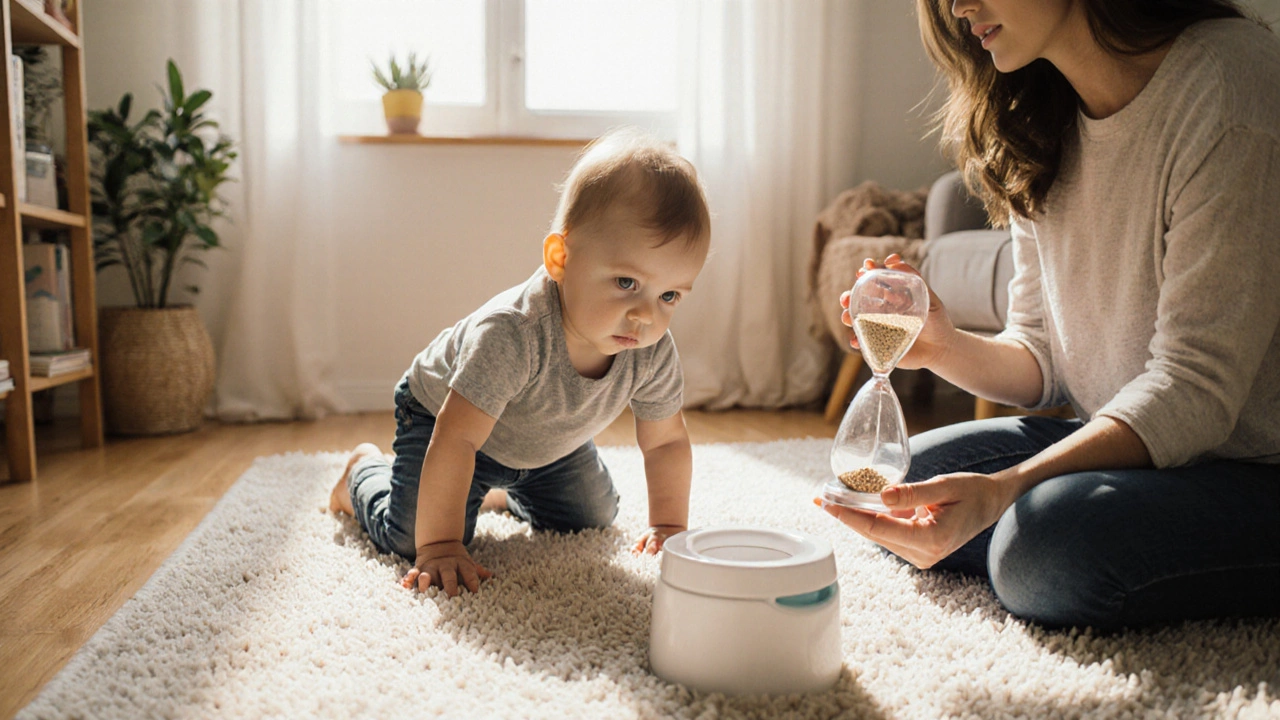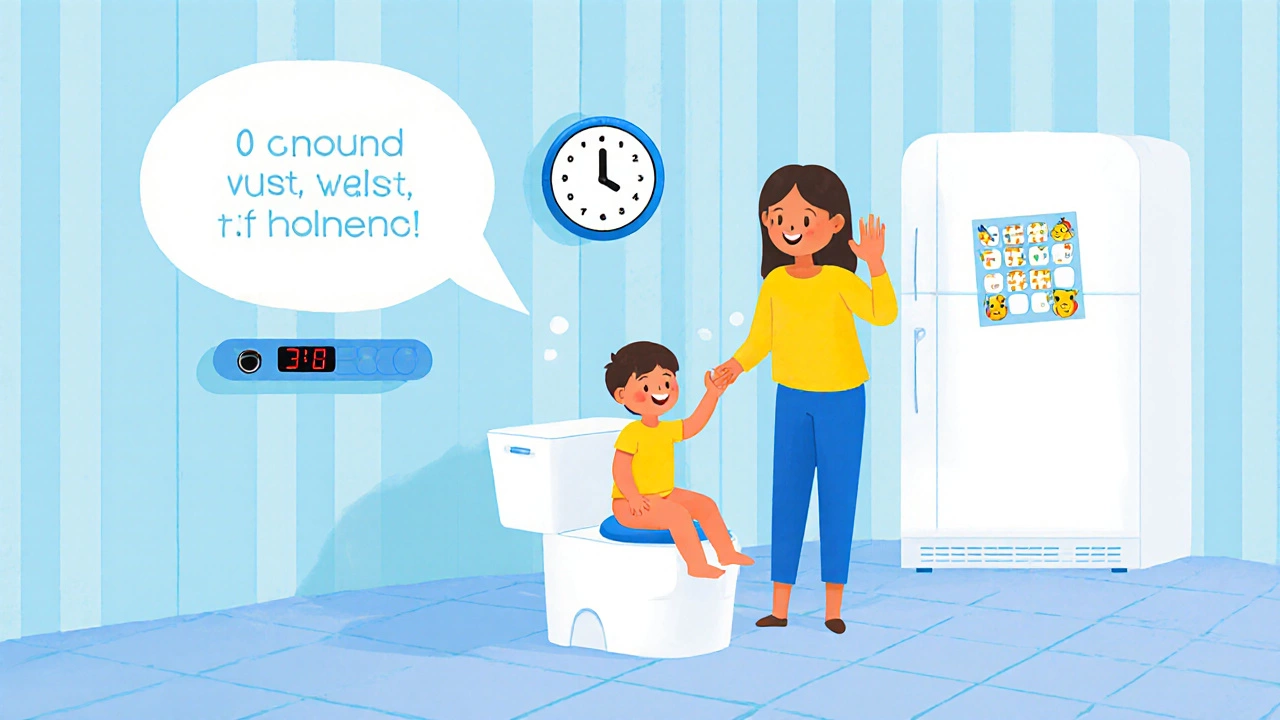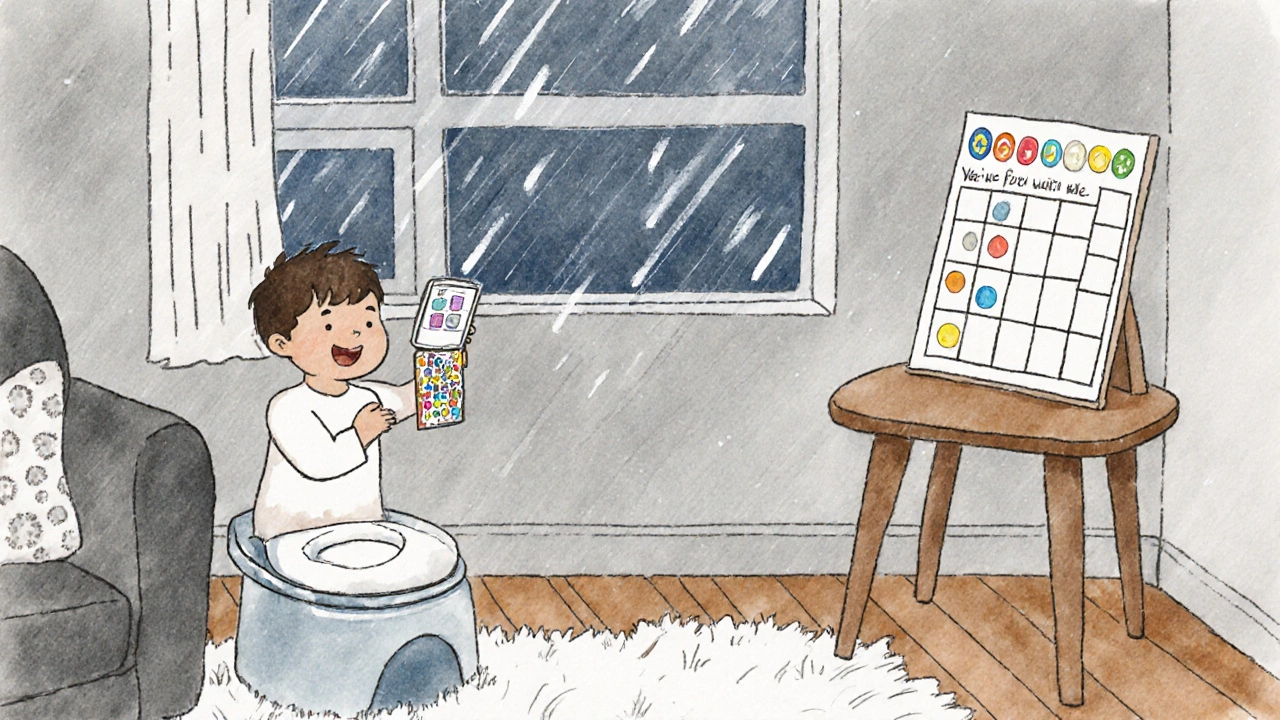10‑Minute Rule for Potty Training: How It Works & When to Use It

Ever wonder why some toddlers suddenly rush to the bathroom after just a few minutes while others take forever? The answer often lies in a simple timing technique that many parents swear by: the 10 minute rule. Below we break down exactly what the rule is, how it fits into a broader potty‑training plan, and what you need to do to make it work for your child.
What the 10 Minute Rule Actually Is
10 minute rule is a timed‑potty approach that tells parents to give their child a ten‑minute window after noticing a toileting cue before moving on to the next activity. In practice, when you see your toddler squirm, make a “potty‑talk” comment, or head toward the bathroom, you set a visible or mental timer for ten minutes. During that period you keep the child’s focus on the bathroom, offering encouragement and reminders, but you avoid forcing or rushing.
How It Differs From Other Potty‑Training Methods
Potty training is the umbrella process of moving a child from diapers to independent toileting. Within that umbrella there are three common strategies:
- Child‑led: Parents wait for clear signs of readiness before any structured attempts.
- Scheduled: Parents set fixed bathroom trips every hour or two, regardless of cues.
- Timed (the 10‑minute rule): Parents react to cues but limit the response window to ten minutes.
The timed method blends the responsiveness of child‑led training with the structure of scheduled trips, helping kids learn that the bathroom is the place for a cue without turning every moment into a bathroom break.
When to Start Using the 10 Minute Rule
Readiness is the single biggest predictor of success. The Canadian Pediatric Society lists five core signs:
- Stays dry for at least two consecutive hours.
- Shows interest in the bathroom or adult toileting habits.
- Can follow simple instructions.
- Communicates the need to go, verbally or non‑verbally.
- Can pull pants up and down with minimal assistance.
If your child displays three or more of these signs, you’re ready to introduce the timed window. Starting between ages 22‑30 months works for most families, but every child’s timeline is unique.

Step‑by‑Step Guide to Implementing the Rule
| Step | What to Do | Why It Helps |
|---|---|---|
| 1 | Watch for a toileting cue (e.g., squirming, verbal request). | Creates a clear trigger for the timed window. |
| 2 | Announce the start: “Okay, we have ten minutes to try the potty.” | Sets expectation and keeps child focused. |
| 3 | Start a timer (phone, watch, sand‑timer). | Provides a concrete visual cue for both parent and child. |
| 4 | Lead the child to the bathroom, sit them on the seat or potty. | Ensures the child is in the right place when the urge hits. |
| 5 | Offer gentle encouragement every 2‑3 minutes, but avoid pressure. | Reinforces positive association without stress. |
| 6 | If successful, celebrate with a quick high‑five or sticker. | Positive reinforcement cements the behavior. |
| 7 | If the timer runs out, calmly transition to the next activity. | Prevents frustration and keeps the routine predictable. |
Repeat this cycle a few times a day-ideally after meals, naps, and before bedtime. Consistency is more important than frequency; the child learns that the bathroom is the place to go whenever a cue appears.
Common Pitfalls and How to Avoid Them
- Forcing the child. If the child resists, stop the attempt and try again later. Pressure can create anxiety and back‑track progress.
- Skipping the timer. The ten‑minute limit creates urgency without panic. Forgetting it often leads to endless “let’s try again later” loops.
- Inconsistent rewards. Use a simple system-like a sticker chart-so the child knows exactly what earns praise.
- Ignoring nighttime cues. The rule is most effective during waking hours. Nighttime dryness usually develops later; focus on daytime consistency first.
How to Know the Rule Is Working
Track three metrics for at least two weeks:
- Success rate. The percentage of timed windows that end in a successful potty use. Aim for 70%+ before scaling back the timer.
- Dry diaper count. Increase in dry diapers between attempts signals stronger bladder control.
- Child’s mood. Fewer tantrums or “I don’t want to go” protests indicate reduced stress.
If you see steady improvement, you can extend the window to 15 minutes or gradually shift to a more child‑led approach.

Tips for Parents in Vancouver (and Beyond)
Living in a rainy city can limit outdoor bathroom trips. Keep a portable potty or a step‑stool in the living room for quick access. Also, the City of Vancouver offers free parent workshops that cover timing techniques-check their calendar for upcoming sessions.
Quick Recap
- Use the rule when your child shows readiness cues.
- Set a clear ten‑minute timer and keep the child focused on the bathroom.
- Reward successes immediately; stay calm if the timer runs out.
- Track success rate, dry diaper count, and mood for at least two weeks.
- Adjust the window or transition to child‑led training as confidence grows.
Frequently Asked Questions
How many times a day should I use the 10‑minute rule?
Start with 3‑4 attempts per day-typically after meals, naps, and before bedtime. Increase frequency only if your child stays calm and interested.
What if my child has accidents during the ten minutes?
Accidents are normal. Keep your tone neutral, clean up quickly, and try again later. Over‑reacting can create fear around the bathroom.
Can the rule be used for nighttime potty training?
The ten‑minute window works best while your child is awake. Nighttime dryness usually develops after consistent daytime success, so focus on the rule during the day first.
Do I need a special potty chair for the rule?
Any stable seat that your child can sit on comfortably works-whether it’s a child‑size potty, a toilet seat adapter, or a portable travel potty.
How long does it usually take for a child to master the rule?
Most families see a clear drop in accidents after 2‑3 weeks of consistent use. Full independence often arrives within 2‑4 months, depending on the child’s developmental pace.


